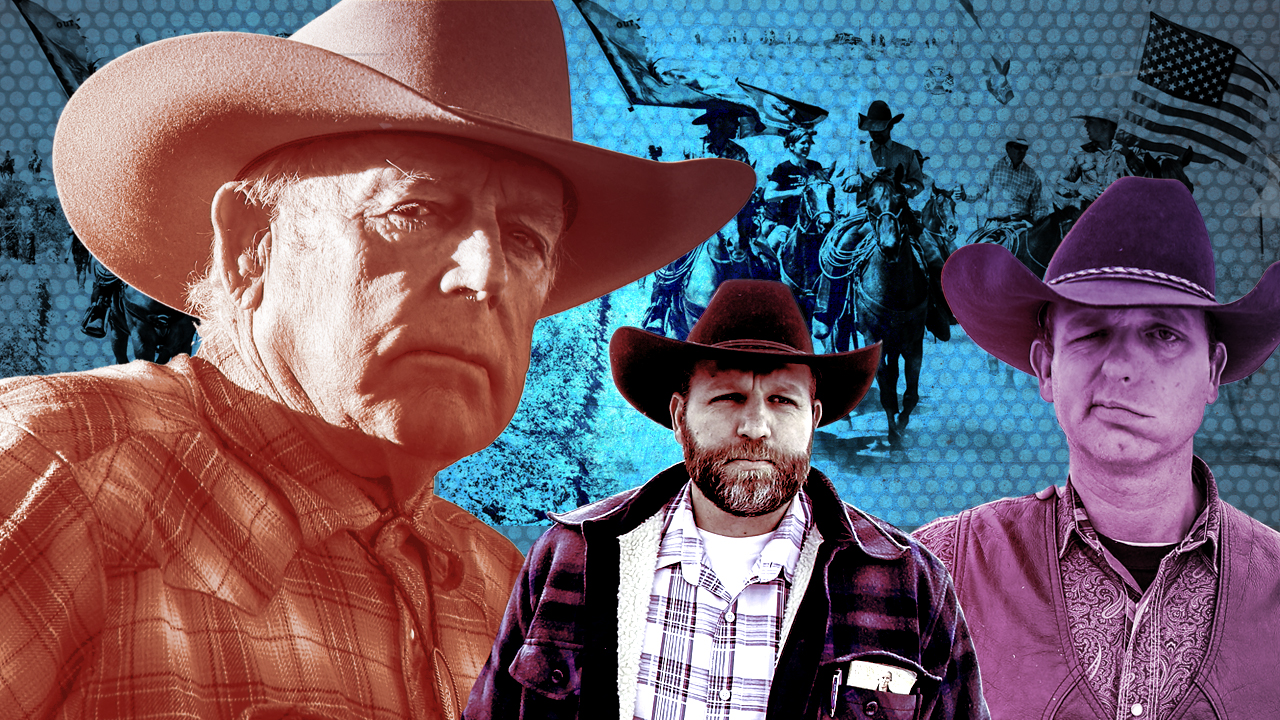The mistrial that overturned charges against Cliven Bundy, his two sons and a militia companion last December may be only the beginning in a series of events challenging the federal government’s confrontation with the Bundy family and the antigovernment extremists who carried his mission nationwide.
Late last month, Jeanette Finicum, the widow of Arizona rancher LaVoy Finicum who was killed at a traffic stop during the Bundy-led occupation of the Malheur National Wildlife Refuge in 2016, filed a wrongful death lawsuit against the federal government. The lawsuit alleges Finicum was shot “assassination style” by “one or more militarized officers of the Oregon State Police and/or FBI,” The Oregonian reported.
Then, in a federal trial under way in Oregon involving an FBI agent involved in the fatal shooting, a defense motion late last month revealed that the FBI had asked Oregon State Police not to wear body cameras on the day of the traffic stop. The revelation came in a 32-page response to FBI agent W. Joseph Astarita’s motion to dismiss a federal indictment against him on three counts of making false statements and two counts of obstruction of justice regarding shots that were fired at the stop on January 27, 2016.
The details of Finicum’s death are established. He was killed after charging a traffic stop on a snowy Oregon highway when police saw him repeatedly reaching for a pocket that contained a handgun. Even still, the far-right has been consumed with conspiracy theories and questions surrounding Finicum’s death, and reports of law enforcement actions that appear to be designed to eliminate the possibility of professional review have only fueled that fire.
“Was LaVoy Finicum assassinated a part of the government’s agenda to stop citizens from speaking out and turn this country into a Totalitarian society?” Shari Dovale, publisher of the website Redoubt News, asked in an editorial alleging the federal government had identified well-meaning Americans to kill due to their political beliefs. “We know there is a list. We want to know what names are on it,” she continued.
While no proof of such a list exists, it seems that the cut-and-dry narrative that began nearly four years ago when the Bundy family engaged in a tense standoff with federal agents in the desert north of Las Vegas has begun to dissolve. And with that there are most certainly worries. The antigovernment movement is, after all, no stranger to far-fetched fantasy and mythos building twists of history and reality. But as the Bundy saga comes to an end with a conclusion few predicted, questions remain about the future of a movement the family helped spur on.
Will compounding federal missteps in the treatment of the Bundy family and their supporters –– and the lies regarding government conduct that have since been exposed in trials –– embolden a movement that grew in strength and size as federal law enforcement struggled with a reasonable means to enforce the law? There is history that merits the question.
In the 1990s, federal law enforcement operations at Waco and Ruby Ridge resulting in the deaths of otherwise innocent civilians grew to become conspiratorial cornerstones of a movement convinced that the federal government was a tyrannical enemy of the people. The two events became twin pillars of justification for Timothy McVeigh’s 1995 attack on the federal building in Oklahoma City, a bombing that left 168 people dead. In both cases, the Justice Department and Congress engaged in a lengthy review, as public opinion –– especially in the burgeoning antigovernment movement –– on law enforcement soured.
Similarly, the circumstances and outcomes of the Bunkerville standoff and the antigovernment occupation of the Malheur National Wildlife Refuge focused passions in the antigovernment community quickly on Finicum’s death as a proof of federal evil.
In the immediate aftermath of Finicum’s death on January 26, 2016, for example, events were held across the nation expressly dedicated to his memory. The protests ranged from a scattering of a few people to over 200, while Finicum’s funeral in Utah brought around 700 sympathizers. At the time, the events aided greatly in the growth of a conspiracy theory that Finicum was murdered for speaking the truth about federal overreach.
Then, during Bundy’s trial last year in Las Vegas, Chief District Judge Gloria Navarro ruled a mistrial with prejudice in December after she learned federal prosecutors had withheld key evidence, including proof that federal snipers had surrounded the Bundy ranch long before a standoff with the Bureau of Land Management threatened to turn violent on April 12, 2014.
In her ruling, Navarro chastised the federal government for what she characterized as a “reckless disregard to fulfill its constitutional duties” and said that “a universal sense of justice has been violated.”
While there is a pattern of the antigovernment movement capitalizing on moments such as these, it remains to been seen what comes of this turn of events. Already, though, stalwarts of the radical right continue to hold up the Bundy story as the beginning of one thing, and the end of another.
Appearing yesterday on the Liberty Nation radio show, Bundy’s attorney Larry Klayman, notorious for his years denouncing Barack Obama as a crypto-Communist Muslim, promised in grand hyperbole to continue his pursuit of the federal government.
The Bundy saga, Klayman said, “was perhaps the biggest example of the Justice Department, BLM and federal government corruption in modern American history, maybe in all of history.”
“The Bundys became the whipping boys, and they became a symbol that you should never question what the federal government does or we will crush you, we will destroy you, and we will even kill you if you don’t follow what we say.”



